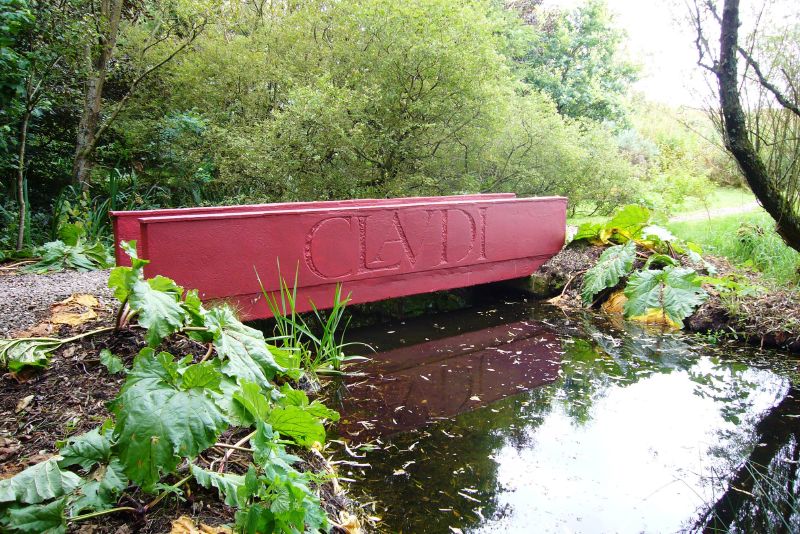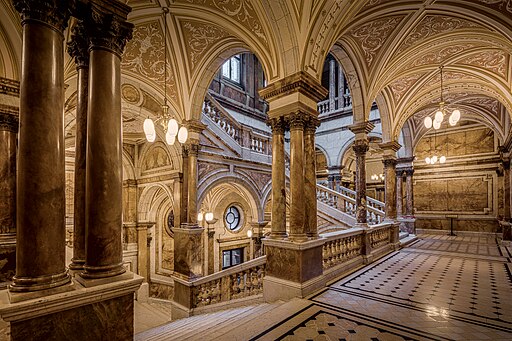Search the Gazetteer
Are the results not as expected? Modify your search term or change the scope to refine your search.
Results for a place that exactly matches ...
Lanarkshire
Lanarkshire, Scotland
Lanarkshire is an inland county, in the heart of the Lowlands of Scotland. It is Scotland's most populous county, for the City of Glasgow and its eastern suburbs fill its northern parts. Lanarkshire is in essence the valley of the River Clyde; the Clyde rises in the Lowther Hills and flows north-westward through the county to Glasgow, after which it widens into the Firth of Clyde. Hence the county's alternative name, Clydesdale.
Place Type: Historic County
Lat, Long: 55.676529,-3.70563
Grid Reference: NS928438
Country: Scotland
GBPNID: 305799
Entry Type: Main listing (P)
URL: https://gazetteer.org.uk/place/Lanarkshire,_305799
 Explore Lanarkshire on Wikishire
Explore Lanarkshire on Wikishire

A rural scene in the south of the county with Tinto Hill in the background
The southernmost parts of Lanarkshire are within the mountains of the Southern Uplands. The highest hills include the county top Culter Fell (2,454 feet), on the eastern border with Peebleshire, and Lowther Hill, on the western border with Dumfriesshire. Upper Clydesdale contains some fine countryside, quiet villages and smaller towns like Biggar. In the village of Dunsyre near the Peebleshire border lies the garden of Little Sparta. Created by artist and poet Ian Hamilton Finlay and his wife, Sue Finlay, the 5-acre Arcadian garden includes concrete poetry in sculptural form, polemic, and philosophical aphorisms, together with sculptures and two temples.

Little Sparta
Standing above the Clyde, the county town Lanark has been an important market town since mediæval time. A mile upstream is New Lanark, the model town developed by Robert Owen, the reforming industrialist, for the families of workers at his factory, New Lanark Mills. Near New Lanark are the picturesque Clyde Falls: Bonnington Linn, Corra Linn, Dundaff Linn and Stonebyres Linn.

New Lanark Mills
The ruins of the 16th-century Craignethan Castle stand above the River Nethan, a tributary of the River Clyde, five miles north-west of Lanark. Craignethan is recognised as an excellent early example of a sophisticated artillery fortification.

Craignethen castle
The town of Carluke sits on a high plateau overlooking the River Clyde, in the heart of Lanarkshire's fruit growing area. The historic market town of Strathaven lies on the other side of the Clyde valley, the largest settlement in the valley of the Avon Water. The ruins of the 14th-century Strathaven Castle stand in its centre.

Strathaven Castle
Further downstream the plain becomes flatter and the larger towns cluster. Hamilton is a working town, developed and based on industry though with fine historic buildings including the Hamilton Mausoleum in Strathclyde Park. Hamilton Palace was the historic seat of the Dukes of Hamilton. Within its former hunting grounds lies Cadzow Castle, above a gorge overlooking the Avon Water. North of Hamilton is Blantyre, famous as the birthplace of David Livingstone. On a steep bank above the Clyde at Bothwell is the large mediæval fortification of Bothwell Castle. Across the Clyde is Motherwell, formerly the steel production capital of Scotland, nicknamed Steelopolis.

Bothwell Castle
Cambuslang, on the south-eastern outskirts of Glasgow, is known as "the largest village in Scotland". It has a long history of coal mining, iron and steel making and ancillary engineering, but most employment in the area now comes from the distribution or service industries. The town of Rutherglen received its status as a Royal Burgh in 1126. It was a centre of heavy industry but has largely become a dormitory town for Glasgow to the north.

Glasgow City Chambers staircase
Glasgow, on the Clyde, is one of Britain's greatest cities, built up by the industrial revolution, transatlantic trade and the shipyards. Glasgow was the main motor of Scotland's swift climb to wealth after the union and even after the shipyards have closed it remains the greatest commercial city of the north and one of the greatest in the whole kingdom. The City Chambers stand on the eastern side of the city's George Square, an eminent example of Victorian civic architecture. The history of the High Kirk of Glasgow, usually known as Glasgow Cathedral, is linked with that of the city. The church is allegedly located where the patron saint of Glasgow, Saint Mungo, built his church.

Glasgow Cathedral
East of Glasgow, out of the Clyde valley on a plateau roughly 400 feet above sea level, lies the former industrial town of Airdrie. The town's traditional economic activities of weaving, coal mining, and heavy industry have ceased, though light industry continues and the town has become a commuter town. Airdrie forms part of a conurbation with its neighbour Coatbridge. Coatbridge has a proud industrial heritage having once been described as the "Iron Burgh". It is now the site of Scotland's inland container base.
East Kilbride was designated as Scotland's first new town in 1947. Eight miles south-west of Glasgow, it forms a large suburban town close to the Renfrewshire border. Dollan Baths, designed by Alexander Buchanan Campbell and opened in 1968, is a 20th-century Category A listed building which imitates a colossal marquee.

Dollan Baths
Lanarkshire probably became a sheriffdom during the reign of David I (1124–53). The county has witnessed many of the notable events in Scottish history. William Wallace attacked the garrison at Lanark in 1297. In 1568 Mary, Queen of Scots was defeated in the Battle of Langside. This defeat led to her flight to England. In 1679 the Covenanters and government forces waged the Battles of Drumclog and Bothwell Bridge in the county. Glasgow prospered as a port from the 17th century by tapping the growing trade with the American colonies. This was followed by the growth of the shipbuilding industry. Lanarkshire, with both Glasgow and rich coal mines, was a powerhouse of the Industrial Revolution. Rapid industrial development, based mainly on textile manufacture, began the middle of the 18th century. The decline of Lanarkshire’s traditional industries during the late 20th century has brought a period of economic adjustment.
Place Type: Historic County
Lat, Long: 55.676529,-3.70563
Grid Reference: NS928438
Country: Scotland
GBPNID: 305799
Entry Type: Main listing (P)
URL: https://gazetteer.org.uk/place/Lanarkshire,_305799
 Explore Lanarkshire on Wikishire
Explore Lanarkshire on Wikishire
A rural scene in the south of the county with Tinto Hill in the background
The southernmost parts of Lanarkshire are within the mountains of the Southern Uplands. The highest hills include the county top Culter Fell (2,454 feet), on the eastern border with Peebleshire, and Lowther Hill, on the western border with Dumfriesshire. Upper Clydesdale contains some fine countryside, quiet villages and smaller towns like Biggar. In the village of Dunsyre near the Peebleshire border lies the garden of Little Sparta. Created by artist and poet Ian Hamilton Finlay and his wife, Sue Finlay, the 5-acre Arcadian garden includes concrete poetry in sculptural form, polemic, and philosophical aphorisms, together with sculptures and two temples.

Little Sparta
Standing above the Clyde, the county town Lanark has been an important market town since mediæval time. A mile upstream is New Lanark, the model town developed by Robert Owen, the reforming industrialist, for the families of workers at his factory, New Lanark Mills. Near New Lanark are the picturesque Clyde Falls: Bonnington Linn, Corra Linn, Dundaff Linn and Stonebyres Linn.

New Lanark Mills
The ruins of the 16th-century Craignethan Castle stand above the River Nethan, a tributary of the River Clyde, five miles north-west of Lanark. Craignethan is recognised as an excellent early example of a sophisticated artillery fortification.

Craignethen castle
The town of Carluke sits on a high plateau overlooking the River Clyde, in the heart of Lanarkshire's fruit growing area. The historic market town of Strathaven lies on the other side of the Clyde valley, the largest settlement in the valley of the Avon Water. The ruins of the 14th-century Strathaven Castle stand in its centre.

Strathaven Castle
Further downstream the plain becomes flatter and the larger towns cluster. Hamilton is a working town, developed and based on industry though with fine historic buildings including the Hamilton Mausoleum in Strathclyde Park. Hamilton Palace was the historic seat of the Dukes of Hamilton. Within its former hunting grounds lies Cadzow Castle, above a gorge overlooking the Avon Water. North of Hamilton is Blantyre, famous as the birthplace of David Livingstone. On a steep bank above the Clyde at Bothwell is the large mediæval fortification of Bothwell Castle. Across the Clyde is Motherwell, formerly the steel production capital of Scotland, nicknamed Steelopolis.

Bothwell Castle
Cambuslang, on the south-eastern outskirts of Glasgow, is known as "the largest village in Scotland". It has a long history of coal mining, iron and steel making and ancillary engineering, but most employment in the area now comes from the distribution or service industries. The town of Rutherglen received its status as a Royal Burgh in 1126. It was a centre of heavy industry but has largely become a dormitory town for Glasgow to the north.

Glasgow City Chambers staircase
Glasgow, on the Clyde, is one of Britain's greatest cities, built up by the industrial revolution, transatlantic trade and the shipyards. Glasgow was the main motor of Scotland's swift climb to wealth after the union and even after the shipyards have closed it remains the greatest commercial city of the north and one of the greatest in the whole kingdom. The City Chambers stand on the eastern side of the city's George Square, an eminent example of Victorian civic architecture. The history of the High Kirk of Glasgow, usually known as Glasgow Cathedral, is linked with that of the city. The church is allegedly located where the patron saint of Glasgow, Saint Mungo, built his church.

Glasgow Cathedral
East of Glasgow, out of the Clyde valley on a plateau roughly 400 feet above sea level, lies the former industrial town of Airdrie. The town's traditional economic activities of weaving, coal mining, and heavy industry have ceased, though light industry continues and the town has become a commuter town. Airdrie forms part of a conurbation with its neighbour Coatbridge. Coatbridge has a proud industrial heritage having once been described as the "Iron Burgh". It is now the site of Scotland's inland container base.
East Kilbride was designated as Scotland's first new town in 1947. Eight miles south-west of Glasgow, it forms a large suburban town close to the Renfrewshire border. Dollan Baths, designed by Alexander Buchanan Campbell and opened in 1968, is a 20th-century Category A listed building which imitates a colossal marquee.

Dollan Baths
Lanarkshire probably became a sheriffdom during the reign of David I (1124–53). The county has witnessed many of the notable events in Scottish history. William Wallace attacked the garrison at Lanark in 1297. In 1568 Mary, Queen of Scots was defeated in the Battle of Langside. This defeat led to her flight to England. In 1679 the Covenanters and government forces waged the Battles of Drumclog and Bothwell Bridge in the county. Glasgow prospered as a port from the 17th century by tapping the growing trade with the American colonies. This was followed by the growth of the shipbuilding industry. Lanarkshire, with both Glasgow and rich coal mines, was a powerhouse of the Industrial Revolution. Rapid industrial development, based mainly on textile manufacture, began the middle of the 18th century. The decline of Lanarkshire’s traditional industries during the late 20th century has brought a period of economic adjustment.


 Menu
Menu